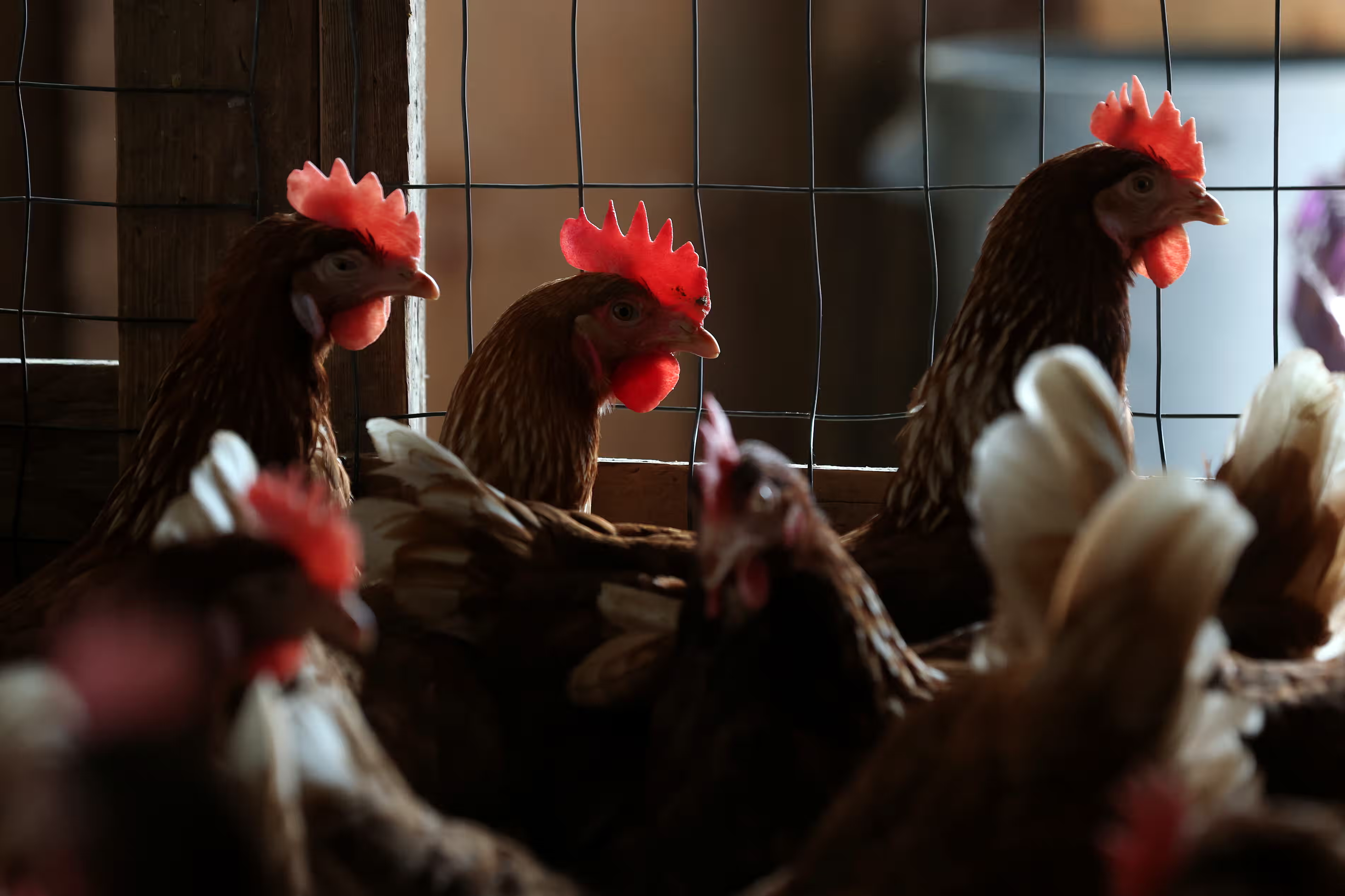What’s the latest on bird flu as of today in the US, summarized for a science and progress-focused organizational audience
Bird Flu Update: As of February 25, 2025, the United States continues to grapple with a significant outbreak of Highly Pathogenic Avian Influenza (HPAI) H5N1, which has had profound effects on public health, agriculture, and the economy.
Public Health Impact
The Centers for Disease Control and Prevention (CDC) reports that 70 individuals across 12 states have tested positive for H5N1. Most cases have been linked to direct contact with infected poultry or dairy cows, with symptoms ranging from mild respiratory issues to severe illness. Notably, the first U.S. death associated with H5N1 occurred in Louisiana in January 2025. Recent hospitalizations include a woman in Wyoming and a man in Ohio, both of whom had direct exposure to infected animals. While human-to-human transmission remains unconfirmed, the situation is under close surveillance.

Agricultural and Economic Impact
The outbreak has devastated the poultry industry, leading to the culling of approximately 162 million birds and affecting 970 herds across 17 states. This has resulted in a severe egg shortage and soaring prices. In response, the U.S. has arranged to import 15,000 tonnes (approximately 33 million pounds) of eggs from Turkey through July 2025 to mitigate supply disruptions.
Alarmingly, H5N1 has also spread to dairy cattle, with infections reported in multiple states. The U.S. Department of Agriculture (USDA) has mandated testing of the national milk supply to prevent contaminated products from reaching consumers. While pasteurization effectively neutralizes the virus, these measures aim to ensure public safety and maintain confidence in dairy products.
Industry Response and Vaccination Efforts
The USDA has granted a conditional license to Zoetis, an animal health company, for an avian influenza vaccine intended for chickens. This move aims to curb the spread of the virus within poultry populations. However, the implementation of widespread vaccination faces challenges, including potential trade restrictions and logistical hurdles.
Egg farmers express concern over the ongoing battle against avian flu, with some describing the virus as a “terrorist” due to its relentless impact. Despite enhanced biosecurity measures, the virus continues to affect flocks, prompting discussions about the necessity of vaccination programs and other long-term solutions to protect the industry.
Implications for Businesses
The avian flu outbreak underscores the critical need for businesses, especially those in the agriculture and food sectors, to implement robust biosecurity protocols and contingency plans. The spread of H5N1 to dairy cattle highlights the virus’s capacity to cross species barriers, posing additional challenges to livestock management and food safety. Companies are encouraged to stay informed about evolving guidelines from health and agricultural authorities and to consider proactive measures, such as employee education and investment in preventive technologies, to mitigate the impact of such outbreaks on operations and public health.
For regular updates, sign up today to be sure not to miss a single one.
Bird Flu Update: Monitoring Curtailed
At the same time, bird flu monitoring staff have been cut back, only for the White House and/or Doge attempting to rehire staff, with uncertain results.
As of February 25, 2025, the United States’ efforts to monitor and control the H5N1 avian influenza outbreak are facing significant challenges due to recent funding and staffing decisions.
Funding and Staffing Adjustments
In January 2025, the Department of Health and Human Services (HHS) allocated approximately $306 million to bolster the H5N1 response. This funding was designated for regional, state, and local preparedness programs, including hospital readiness and emerging pathogen training. The Centers for Disease Control and Prevention (CDC) received $111 million to enhance monitoring efforts, while the National Institutes of Health (NIH) was awarded $11 million for research into potential medical countermeasures.
Despite these investments, recent federal workforce reductions have adversely impacted avian flu monitoring capabilities. Several officials integral to the bird flu response were inadvertently terminated amid broader staff cuts initiated by the Department of Government Efficiency (DOGE), led by Elon Musk. These layoffs included veterinarians and emergency response personnel from the U.S. Department of Agriculture (USDA), disrupting critical functions such as laboratory oversight and case confirmation. Efforts are currently underway to rehire these essential staff members.
Additionally, the White House’s Office of Pandemic Preparedness and Response Policy (OPPR) is undergoing significant transitions. Following the change in administration, half of the 18-person staff, including key leadership, have departed to accommodate new appointees. This restructuring has raised concerns among health experts about the continuity and prioritization of pandemic preparedness efforts, especially amidst the ongoing avian flu outbreak.
Bird Flu Update: Implications for Monitoring Efforts
The combination of recent funding allocations and subsequent staffing reductions presents a complex landscape for avian flu monitoring in the U.S. While financial resources have been directed toward enhancing preparedness and response, the loss of experienced personnel poses challenges to the effective implementation of monitoring programs. The inadvertent termination of key staff has disrupted essential functions, and the restructuring of the OPPR may further impact the strategic coordination of pandemic response efforts.
In summary, the U.S. is navigating a critical juncture in its avian flu monitoring and response initiatives. Balancing recent financial investments with the need to restore and maintain a skilled workforce is essential to effectively manage and mitigate the ongoing H5N1 outbreak.
Recent Developments in U.S. Avian Flu Response
Alarm as bird flu now ‘endemic in cows’ while Trump cuts staff and funding

Associated Press: Agriculture Department tries to rehire fired workers tied to bird flu response
Interested in learning more about Enthereal – check out this recent article on essential medicines shortages, particularly during the last pandemic.
Book a call to quickly – and with a human touch – assess how Enthereal and your priorities may benefit by collaboration and participating with Enthereal’s growing network.
Leave a Reply